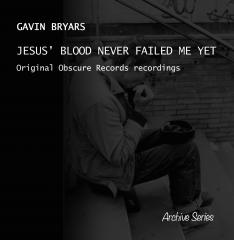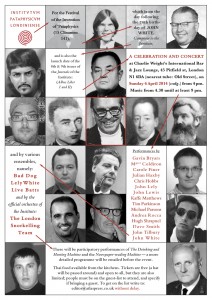Category: Uncategorized
Looking back on Barney Childs in London, 1987
This is what our Facebook friends would call ‘Throw-Back Thursday’, except that this isn’t Facebook and it isn’t Thursday. Last week we found some materials relating to the Hartzell Hilton Band, a group that existed in the late 1980s, playing music by Christopher Hobbs, John White, Michael Parsons, Hugh Shrapnel and others. The Hartzell Hilton Band was a quirky little ensemble, consisting as it did of two E flat clarinets, two violas, mallet percussion and piano. The name came from Barney Childs’ nickname for his house on Hartzell Avenue in Redlands, California, because so many composers and performers came to visit.
Barney Childs, a major composer of postwar American music and one of the greatest thinkers about the aesthetics of indeterminacy and new notations, came to visit me in London (where I was working on my PhD). Childs was no stranger to England, having been a Rhodes Scholar at Oxford from 1949–51, and knew many people here. Michael Newman, a lecturer at Goldsmiths College, London, had been one of Barney’s guests at the Hartzell Hilton, so we decided to put together a concert at Goldsmiths in honour of his visit. In fact, we put together two concerts, the second one at the British Music Information Centre, just off Oxford Street (but that will be another entry). Here is the flyer advertising both concerts:
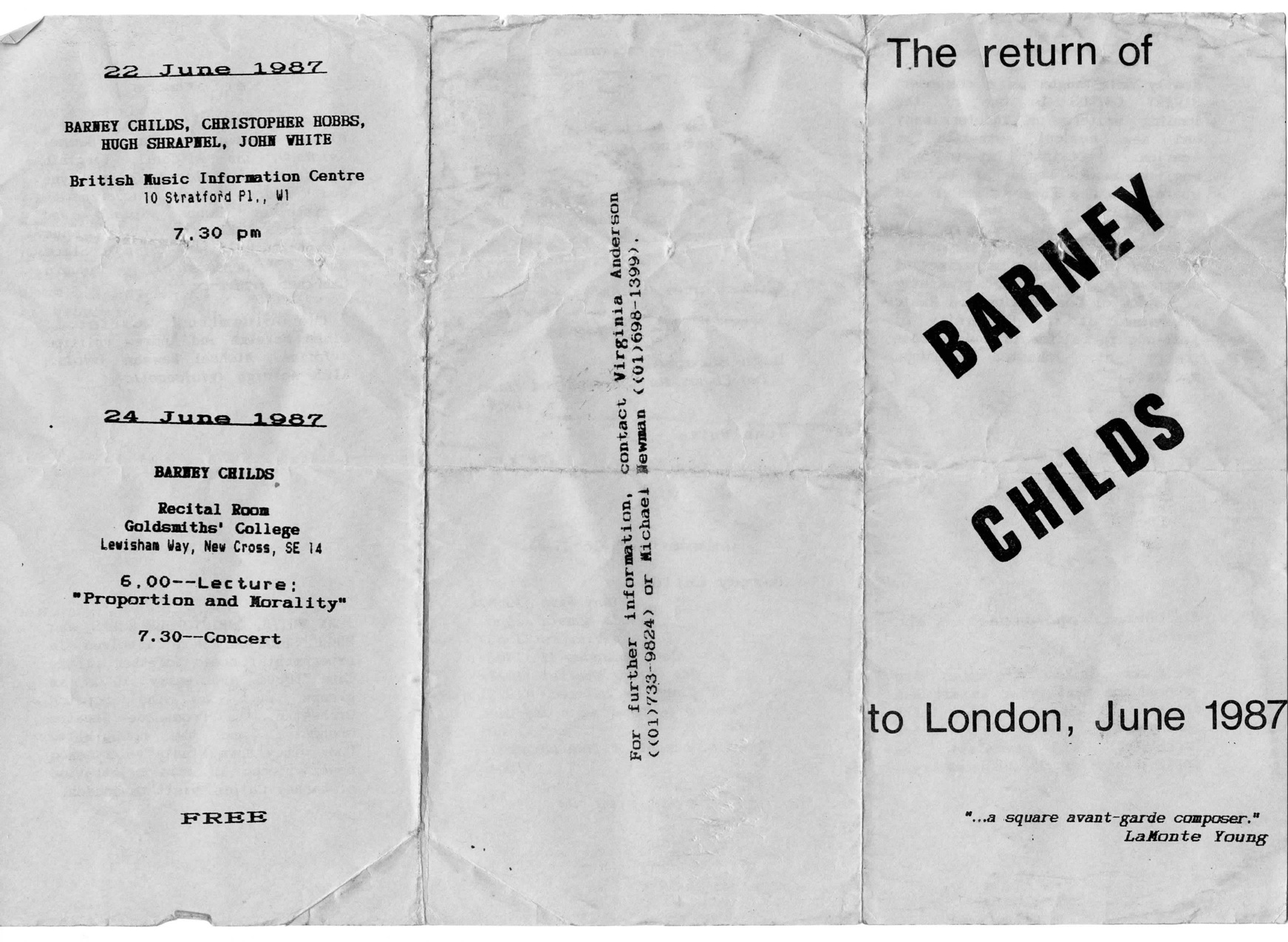
The front (right third of the picture, above) includes a quotation from La Monte Young: ‘…a square avant-garde composer.’ This was one of Barney’s typical anecdotes about himself. One of his students was Joseph Byrd, who later worked with Young in Fluxus (and still later became an alternative rock star). Byrd had said that when he mentioned Barney, this was Young’s assessment, which tickled Barney quite a lot.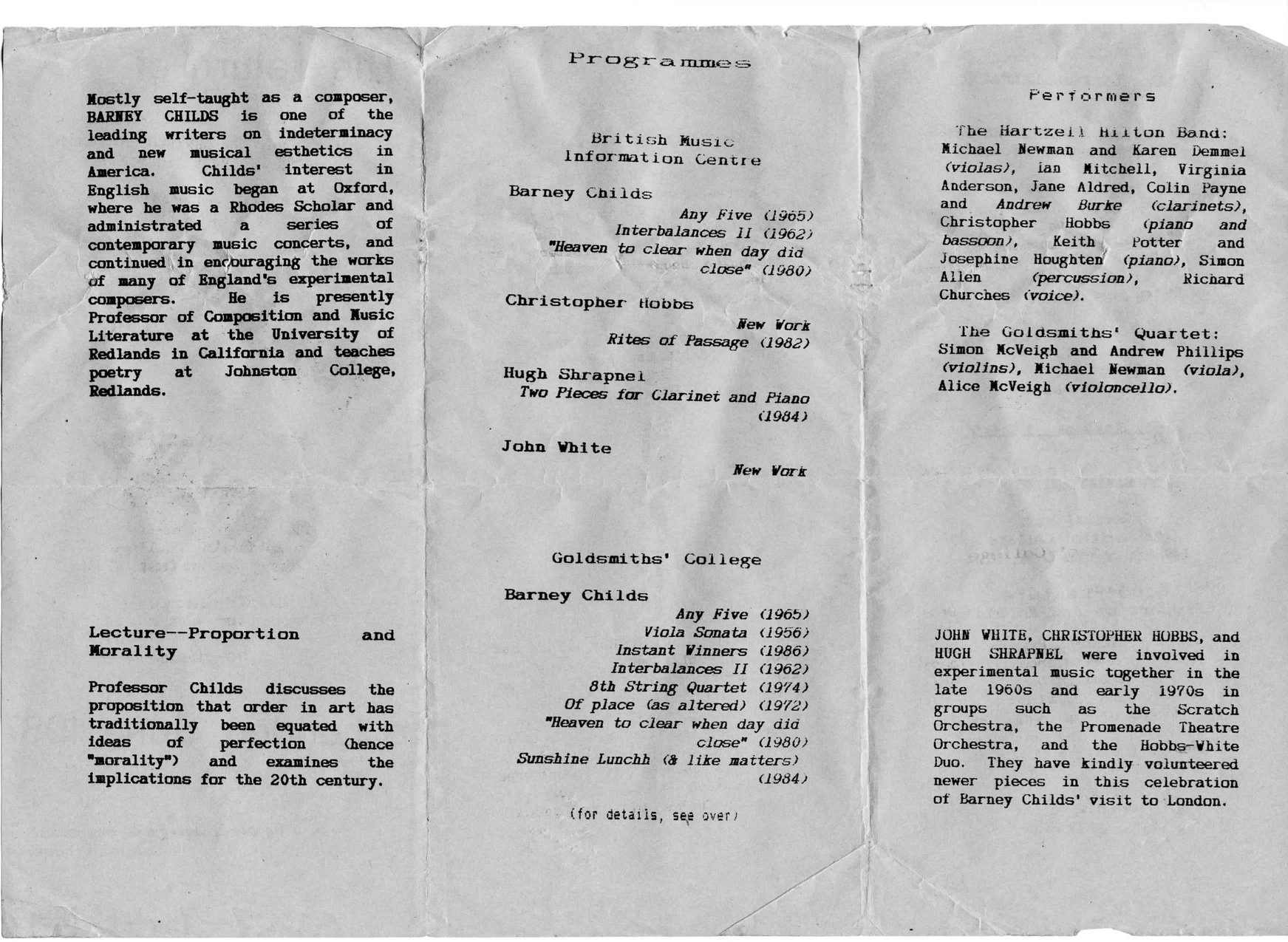
At Goldsmiths, the concert was preceded by a lecture by Barney Childs, befitting the academic setting. In this brief flyer, the performers for both concerts are listed (right third, above). As I remember it, the Hartzell Hilton name was created to distinguish other players on the Goldsmiths concert from the Goldsmiths quartet, which was performing his 8th String Quartet. Thus, for this one occasion, the ‘Hartzell Hilton Band’ was anyone who played on the concert in the other pieces.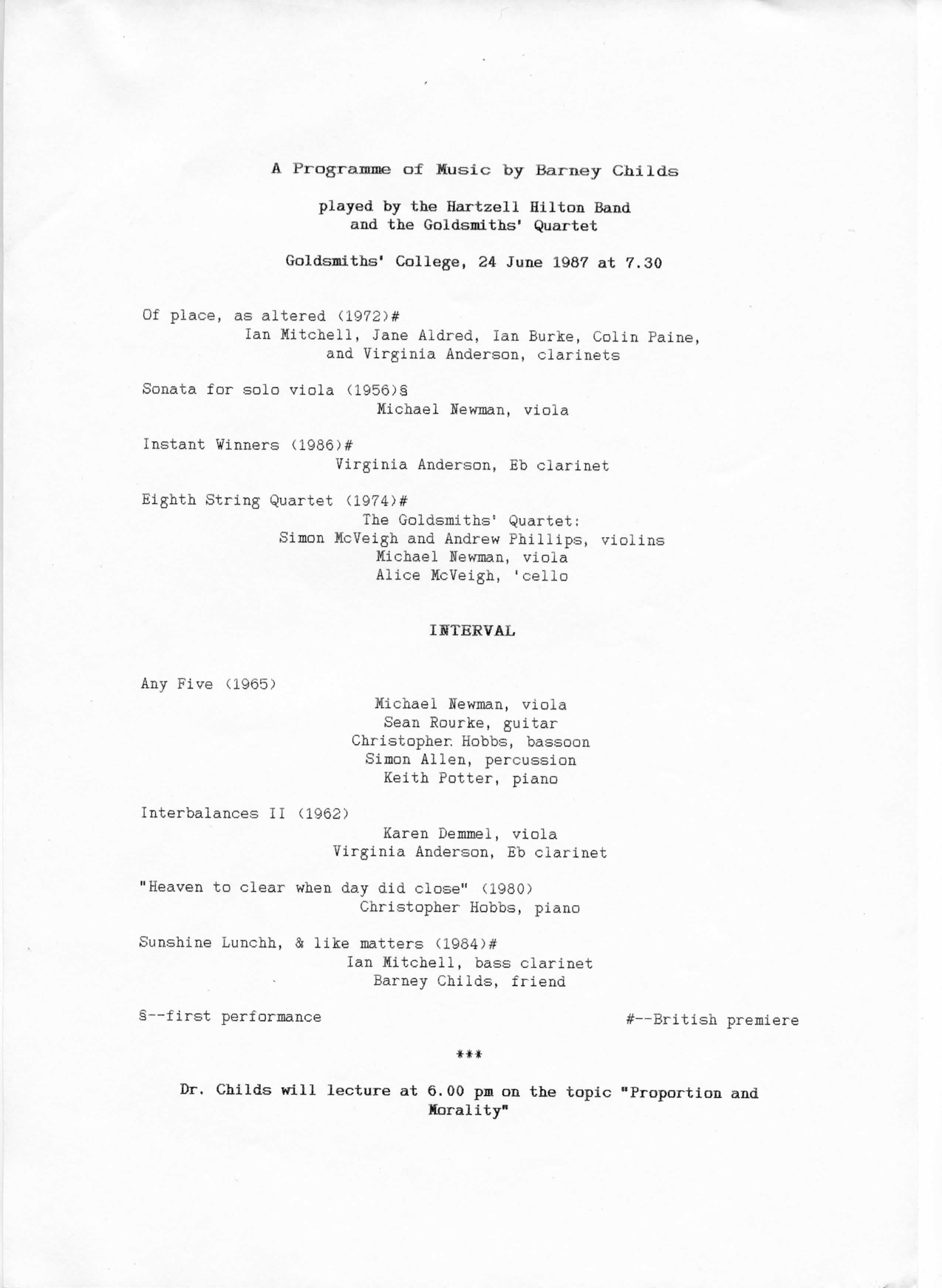
The concert began with Childs’ 1972 ‘quiet’ minimalist piece, Of place, as altered, a rather glorious subtone clarinet quintet. The viola sonata, played by Mike Newman, was the earliest piece on the programme, and has the kind of American concert music sound of that era. I played Instant Winners, which Barney had written for me the previous year. This was my first performance of this set of little pieces originally written for my amusement (and because of my fascination with the little sopranino E flat clarinet), but it wasn’t the premiere, as James Chavez has premiered it in the Midwestern United States the previous autumn. This was followed by the 8th String Quartet. Barney had written extensively for the ‘normal’ chamber ensembles in the 1950s, and this was a later addition.
After the interval, came Any Five, which is, perhaps, Barney Childs’ greatest hit. This piece, for five performers in categories such as woodwind, voice, percussion, brass, and string, is indeterminate and in mobile form, in that certain decisions by performers indicate the progress of the piece from one section to another. It also contains some extended techniques and some theatre. What people usually remember about this piece is that it includes a cue given by throwing a tennis ball out toward the audience, and the final cue, the spoken word, ‘Consider’, that ends the piece. Interbalances II was one of a series of that name exploring elements of indeterminacy in small groups. This piece was for viola and one other (any other). In this version, I played the ‘other’, commenting, part on E flat clarinet. Heaven to clear when day did close was a piano piece using the kind of jazz-based quiet presentation common to the style of younger Southern Californian composers. Sunshine lunchh, & like matters was written by Barney for his duo with Phillip Rehfeldt, Clarinet & Friend. It is in some ways a deeply personal piece for Barney, and in other ways just a great fun romp. The bass clarinet part is pretty clearly marked, but the ‘friend’ part is a kind of self-assembly with some fixed items. For this piece, Barney wore a wizard hat and waved a wand, while reading quotations from readings that either impressed or amused him, and ending with a full-throated rendition of ‘Rolling Down to Rio’. If anything, I remember that Ian Mitchell’s performance was better than other bass clarinettists.
Next time, I will share the BMIC concert, which has some notable differences.
New York Downtown in the 1980s
It’s amazing how sometimes two things come along that go together — maybe not a match, but one follows along from another, comments on it, contradicts it maybe. In the last 24 hours, we found two such things. We’ll deal with the most recent first, because it may be a scene you know: Peter Gordon’s Love of Life Orchestra performing ‘Siberia’ live at CBGBs. For all the balance and intonation problems, this is a great evocation of the New York scene in the early 1980s.
The other New York connection is less well known: John Kuhlman was a fascinating West Coast composer, associated in the early years with what would eventually be Cold Blue Recordings. He studied composition with Barney Childs at the University of Redlands and played in the Redlands Improvisers’ Orchestra with Jim Fox, Rick Cox, Read Miller, Anne Noble, and Marty Walker in the mid-1970s. Kuhlamn’s early composition had a lovely West Coast jazz-based ‘pretty music’ sound. In 1979, Kuhlman moved to New York, where he and his bands played in clubs like CBGBs, Roulette, the Mud Club, and elsewhere. He also became ‘handyman to the stars’, fixing up lofts and apartments for Yoko Ono and other leading lights of the New York arts scene.
John Kuhlman is not well known because he died young (in 1996). The trombonist, and his former flatmate, Fred Parcells, has put up a web page dedicated to John Kuhlman’s memory, including some recordings of his performances in New York.
http://www.fredparcells.com/johnkuhlman/johnkuhlman.html
This is a fascinating ‘what if’ history of a very talented composer, and a great portrait of a good friend of those who knew him at the University of Redlands and those who knew him in New York.
New Book about John White!
We had been meaning to put this announcement up for all to attend, but we understand that it sold out almost immediately. This is the launch of Dave Smith’s book, The A-Z of John White, sponsored by the Intitutuum Pataphysicum Londiniense, Sunday, 6 April, at Charlie Wright’s International Bar and Jazz Lounge, in London from 4 pm. John White is also 78 years old this week, so the theme of the activities — a lot of performances! — is 78.
White, who is pretty much the ‘Godfatha’ of British Minimalism, has created Machines, systems, electronic symphonies and his own diary-like series of piano sonatas (near 200 these days — it’s hard to keep up with him!) over the years, as well as founding some of the great British groups: the Promenade Theatre Orchestra, Hobbs-White Duo, The Garden Furniture Ensemble, Farewell Symphony Orchestra, Live Batts!!, among others. White’s music (as you might guess from the band titles) is inventive and delightful. Dave’s book is a compendium of all things White, including types of music, performances, and reviews. Important stuff. Here’s the announcement: we’ll let you know how to get the book and hopefully send news of what happened at this event next week. (the pictures are those of all sorts of guys named John White).
Sizzle with da FIzzle, dogs!
More from Mike about Fizzle and all things Birmingham:
Good news for Fizzle this Tuesday.
Benedict Taylor, Tom Jackson and Dom Lash will now be joined by Mark Sanders on drums/percussion.
Also two fantastic gigs coming up:
COMING UP AT JAZZLINES: PAUL DUNMALL AT 60 and THE LANGSTON PROJECT
Jazzlines is celebrating Paul Dunmall’s birthday (which actually came earlier in the year) and his major contribution to music with a special concert at mac (Midlands Arts Centre, Cannon Hill Park) on Saturday 26th October at 8pm. The concert will feature two aspects of Paul’s music, the improv. side and his compositional side. The concert will start with an improvised set from the Realisation Trio, which features, as well as Paul, Nick Jurd on bass and Jim Bashfordon drums. This is the group that made an excellent album earlier this year. In the second set Paul will present the premiere of a composed work for a new sextet featuring Percy Pursglove on trumpet, Mike Fletcher on alto sax and flute, Paul on various instruments, Mike Hurley on piano, Chris Mapp on bass and Mark Sanders on drums. Of course there will be plenty of room for improvisation within the compositions.
On Tuesday November 5th Jazzlines will be presenting at mac a new Ango French project developed with La Dynamo club in Pantin Paris and supported by Jazz Shuttle. The music is the setting to music of certain poems written by Langston Hughes, the key writer in the Harlem Renaissance of the 1930s and 40s. The music has been developed over five days of rehearsal by Hasse Poulsen guitar, Luc Ex bass guitar, Mark Sanders drums and Elaine Mitchener vocals. Tony Dudley-Evans attended the premiere at La Dynamo last week and reports that the music is very strong moving from poignant songs to very exciting improv., but always with a wonderful groove. Strongly recommended.
Fizzle in Brum
Mike Hurley sends word of the newest Fizzle show. If you’re in the area, why not drop in and then go for a curry? Good beer at the Lamp, too.
Fizzle this Tuesday 22nd October.
At The Lamp Tavern, Barford St, B5 6AH.
8:30pm, £5/3
Benedict Taylor – viola
Dom Lash – bass
Tom Jackson – clarinet
In various combinations: solo, duo and trio.
John White Prom
After more years than you can shake a stick at, the BBC Promenade Concerts at the Royal Albert Hall (the premiere British summer concert series), fondly called the ‘Proms’, will finally play music by John White. White’s Chord-Breaking Machine will open a concert of music by Frederic Rzewski, Morton Feldman, and, lest you think that they lost their heads and abandoned other music, the premiere of a piece by Gerald Barry.
This will be White’s first Prom. It’s a late one, of course, but it’s a Prom. And Cardew only got a Prom last year (the previous one in 1972 was the infamous Maoist Great Learning Prom, which seems to have scared the Beeb off any experimental music for a long time). Chord-Breaking Machine (1971) was commissioned by the Orchestra of King’s College School in Wimbledon. It is one of White’s Machine process minimalist pieces, related to White’s Gothic Chord Machine, a piece written for the Promenade Theatre Orchestra, a quartet (White, Christopher Hobbs, Alec Hill, and Hugh Shrapnel) who played virtuosic music on reed organs and toy pianos. Chord-Breaking Machine takes the ‘gothic chord’ idea to orchestral levels, consisting of a percussion pulse, successions of chords that ‘break’ from one to the other through diffusion, and brass ‘milestone’ chords. As far as we can tell, Chord-Breaking Machine has not been played since 1971. Should you have access to it, Brian Dennis’ review of the premiere (‘John White’, in ‘Music in London’, The Musical Times, 112/1541 (1971), p. 681) is a joy to read, not only for his account of Chord-Breaking Machine, but also for his assessment of White and Cardew playing White’s ‘Cello and Tuba Machine at the Queen Elizabeth Hall on May 17 of that year, where he refers to Stockhausen’s ‘mystical (and egocentric) ramblings’ elsewhere in the issue.
The Chord-Breaking Machine concert will be broadcast live on Monday, 19 August 2013 at 10.15, on the BBC (Radio 3). For information and tickets for the live event, see: http://www.bbc.co.uk/proms/whats-on/2013/august-19/14646 .

